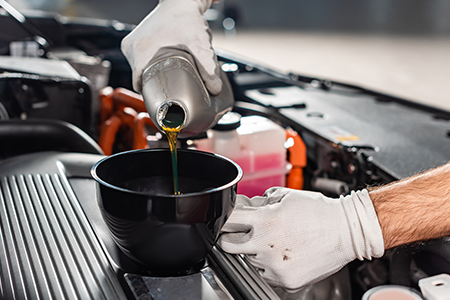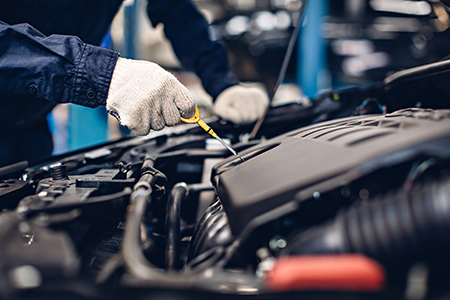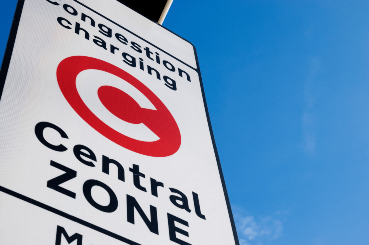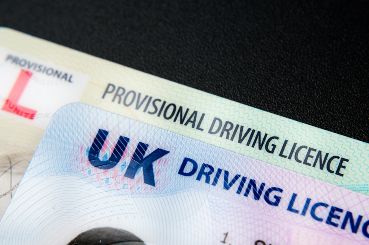Engine oil. It’s a murky liquid most car owners don’t think about much, until that dreaded oil light flickers on. But this dark hero plays a vital role in keeping your car running smoothly for miles to come. This blog is your one-stop shop for everything engine oil!
We’ll break down the what, why, and how of engine oil, empowering you to understand this essential fluid and ensure your car gets the lubrication love it deserves.
Whether you’re a seasoned gearhead or a curious car owner, buckle up and get ready to dive deep into the world of engine oil!
What Does Engine Oil Do?
As car owners we know we need to change our engine’s oil at regular intervals but what does engine oil actually do?
Engine oil has a number of vital purposes, however, essentially engine oil keeps the engine running smoothly. Engines contain many moving parts which have the potential to rub against each other creating friction.
But that’s not all oil has a number of other functions which include:
This friction can damage parts of the engine and cause them to wear more quickly. If the friction built up, then it would dramatically slow down the running of the engine making it less efficient and more likely to break down. Oil lubricates engine parts to reduce friction and help keep the engine running smoothly.
- Helps to reduce heat build-up within the engine – Heat is produced from the friction of engine parts and excessive heat can cause substantial damage to vital engine components. As oil moves around the engine heat is carried away to cooler parts. This dissipation of heat means that no one area of the engine should become too hot.
- Keeps the engine clean – This is vital to keep the engine running at maximum efficiency. The oil picks up debris and dust particles and carries them to the oil filter where they become trapped. This reduces the risk of dirt building up in the engine and causing damage to the engine.
- Protects the engine parts from corrosion – One of the additives present within the majority of oils is specifically there to help to reduce oxidation and prevent corrosion.
- To help improve fuel efficiency – The slipperier the engine parts then the less force is needed to move them so less fuel is used by the engine.
At Stoneacre we carry out both an oil change and oil filter change as standard when you book your car in for a Car Service.

How Does Engine Oil Do This?
The majority of modern engine oils on the market are made up of a base oil and a number of additives. The base oil’s main purpose is to lubricate engine parts reducing friction while the additives stabilise the thickness of oil under varying temperatures, help break down debris within the engine and protect engine parts from corrosion and wear.
Over time oil’s ability to fulfil its role deteriorates that’s why changing your oil is one of the most important aspects of routine vehicle maintenance.
When Should You Check the Engine Oil Level?
Traditionally oil changes were recommended at around 3,000 miles or approximately every 3 months. However, progress and improvements in engine design and oil manufacturing mean that these figures are largely outdated in modern cars.
Fully synthetic oils are designed to last much longer than mineral oils so most modern engines are now capable of travelling between 5,000-10,000 miles between oil changes depending on your vehicle and driving conditions.
At Stoneacre we endorse sticking to your owner’s manual recommendation on when to change engine oil. However, it is important that you read these recommendations closely to determine the correct interval between oil changes as it will alter depending upon your vehicle’s operating conditions and your driving habits.
Manufacturers have a number of driving conditions that they consider severe on your engine, and which result in more frequent oil changes being necessary.
Some of these include:
- Towing a trailer or carrying goods on a roof rack or in a car-top carrier
- Frequent fast acceleration then stopping/slowing considerably shortly afterwards (think of a long line of traffic lights and speeding up to get through one set only to get stopped at the next)
- Regular short trips of less than 5 miles under normal conditions or 10 miles in freezing conditions
- Frequent start/stop driving (urban driving) in hot weather.
- Frequent driving on roads that are dusty, muddy or have salt or gravel on the surface.
- Driving at less than 50mph over long distances
At Stoneacre, we also recommend that you change your oil filter every time you change your oil to help keep your car running smoothly.
What To Do When Your Oil Warning Light Comes On
If you’re thinking “why is my oil pressure light on?” – don’t ignore an oil warning light! It signifies a potential issue with your engine’s lubrication system. Here’s what to do:
- Pullover Safely: Find a safe spot to pull over as soon as possible and turn off the engine. Continuing to drive with low oil pressure can severely damage your engine.
- Check Oil Level: Once pulled over, let your engine cool down for at least 10 minutes. Then, find the dipstick (consult your car’s manual if needed) and use it to check your oil level. If the oil level is low, that might be the reason for the warning light.
- Assess the Situation: If the oil level is low, go ahead to top up the oil (see next section). If the oil level is good but the light remains on, or if you notice any strange engine noises or burning smells, call for roadside assistance or a tow truck. It’s better to be safe than risk further engine damage.
How To Check Engine Oil?
Checking your engine oil is a quick and simple process:
- Park on Level Ground: Park your car on a level surface and ensure the engine is off and cool.
- Locate the Dipstick: Pop open the bonnet and find the dipstick. It’s usually a brightly coloured loop or handle with a ring on the end for easy pulling. Consult your car’s manual if you have trouble locating it.
- Pull and Wipe: Pull out the dipstick entirely and wipe it clean with a lint-free cloth.
- Check the Oil Level: Reinsert the dipstick fully, then pull it out again to inspect the oil level. There will be two markings on the dipstick indicating the minimum and maximum recommended oil levels.
How To Top Up Engine Oil?
If your oil level is low and you’re comfortable doing so, here’s how to top up your engine oil:
Once the oil reaches the recommended level on the dipstick, wipe off any spills and securely replace the oil filler cap.
You’ll need the correct engine oil for your car (see next section) and a funnel. Consult your car’s manual for the recommended oil type and capacity.
Locate the engine oil filler cap, usually on top of the engine. Make sure the engine is off and cool before opening it.
Using the funnel, add oil slowly in small batches. Check the dipstick frequently after each addition to monitor the oil level. Don’t overfill!

What Engine Oil Do I Need for My Car?
Using the wrong engine oil can harm your engine. Here’s how to find the right oil for your car:
- Consult the Owner’s Manual: Your car’s manual will specify the recommended oil viscosity and API rating. Viscosity refers to the oil’s thickness, while the API rating shows its performance and compatibility with your engine.
- Check the Oil Cap: Sometimes, the recommended oil type is labelled on the inside of your engine oil filler cap.
If you’re unsure, it’s always best to consult a mechanic or your car dealership’s service department for guidance on choosing the right oil.

How Much Engine Oil Do I Need?
Finding the right amount of engine oil for your car is crucial. The exact quantity depends on your car’s make and model. Luckily, there are two easy ways to determine the recommended capacity.
First, check your owner’s manual – it will explicitly say the amount of oil your engine needs.
Alternatively, the dipstick itself might have markings on the side indicating the oil capacity.
Remember, exceeding this recommended level is just as bad as running low. Overfilling your engine with oil can cause various problems, so stick to the specified amount for optimal performance and engine health.
Too Much Engine Oil
Don’t be tempted to pour in extra oil! Overfilling your engine can lead to a domino effect of problems. The surplus oil creates drag inside the engine, making it work harder and robbing you of precious fuel efficiency and performance.
Even worse, the extra pressure can cause leaks from the engine’s seals and gaskets. In some cases, excessive oil might even find its way into your spark plugs, fouling them and hindering their ability to properly ignite the fuel.
If you suspect you’ve overfilled your engine oil, don’t delay! Get it drained to the proper level by a mechanic as soon as possible to avoid these potential issues.
By now, you’re equipped with the knowledge to confidently check your oil level, choose the right type, and understand the importance of regular oil changes. Remember, a little TLC for your engine oil goes a long way in ensuring a long and healthy life for your car. So, keep the oil topped up, the filter fresh, and your engine purring with satisfaction.


















